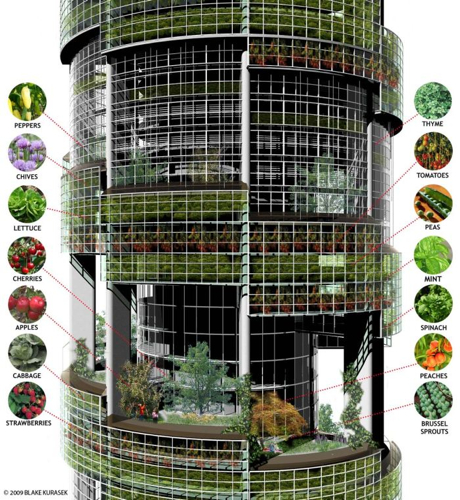From Architecture to Urban Farming
A Brief Story of a Vision of Urban Farming
“While doing research on solutions for sustainable mixed-use urban corridors, I came to foresee the value of incorporating urban farming into the common space of habitats.”
In a brief story of her vision, Ruth brings us the case of urban farming as a growing movement to tackle problems that the world faces in the 21st century. Her story is personal.
She tells us how her vision evolved from childhood experiences in the Romanian countryside to her life in Rome. She had the mentorships of Professors, Zevi and Pellegrin, who introduced to her, Wright’s thinking and works. Later in her practice as an architect, her discovery of Permaculture, became a new passion for urban farming and local edible gardens.
She posed to herself some critical questions:
- How can urban farming contribute to making the world a better place?
- What is the connection between architecture, planning and urban farming?
- What can each of us do to become self-reliable on the food we put on our table?
- How can edible gardens become a design component integrated to urban development?
- How can urban farming provide a stage for social interaction?
Some facts may help to put a global problem into perspective:
- The First Agriculture Revolution started about 10,000 years ago. As nomads settled, cities were born. The cities were surrounded by farms, which supplied its population with fresh food.

San Gimigniano surrounded by farms – Photo: Pablo Charin / Minube
- As the world’s population grew from 1.6 billion in 1900 to 7.5 billion today, the agriculture transformed radically. Industrialized farming brought us ecological degradation. Aggravated by the massive use of toxic chemicals, the path of food from the farm to the city became dependent on carbon-based fuel for transportation.
- Climate change is likely to expand the areas of drought, hurricanes and floods, diminishing the existing cultivable areas.

Newsweek 10/30/2015

Milano EXPO 2015: Feeding the World
- Today’s global population growth is about 75 million a year. We are likely to reach ten billion around by 2050. Too far away? Not really! That is just “around the corner.” By 2050, children born today will be in their thirties.

World Population-1800-2050
- One acre of land is needed to feed one person for one year. By 2050 we will need additional not-yet-existing cultivable land of about 10 million km2, equal to the size of the United States.
How shall we continue to feed the planet?
How shall we invent the future while we free cultivable land from the voracious appetite of urban sprawl? If we want to create a decent living environment, the action is needed NOW. Here are some possibilities:
- Increase mixed-use urban density along urban corridors.
- Create cultivable areas within residential multi-family buildings, office buildings, schools, factories, hotels, etc.
- Design common edible gardens as places for social interaction.
- Design workspaces that provide edible gardens to its tenants.
- Plan neighborhoods that include common cultivable areas.
- Build multi-story farms.

Vertical Farming – Rendering: Blake Kurasek

Vertical Farming
No single solution can fit all needs. The use of eco-friendly lightweight hydroponic systems that consume 90% less water than traditional farming can be incorporated into the built environment.
On the other hand, permaculture, first developed by Bill Mollison and David Holmgren, brings a holistic approach that combines agricultural and social design principles. By increasing our awareness of “thinking globally and acting locally,” each of us can contribute to making the world a better place to inhabit.

Jean Phillipe Pargade Technical and Scientific School, Paris. Photo: Sergio Grazia
